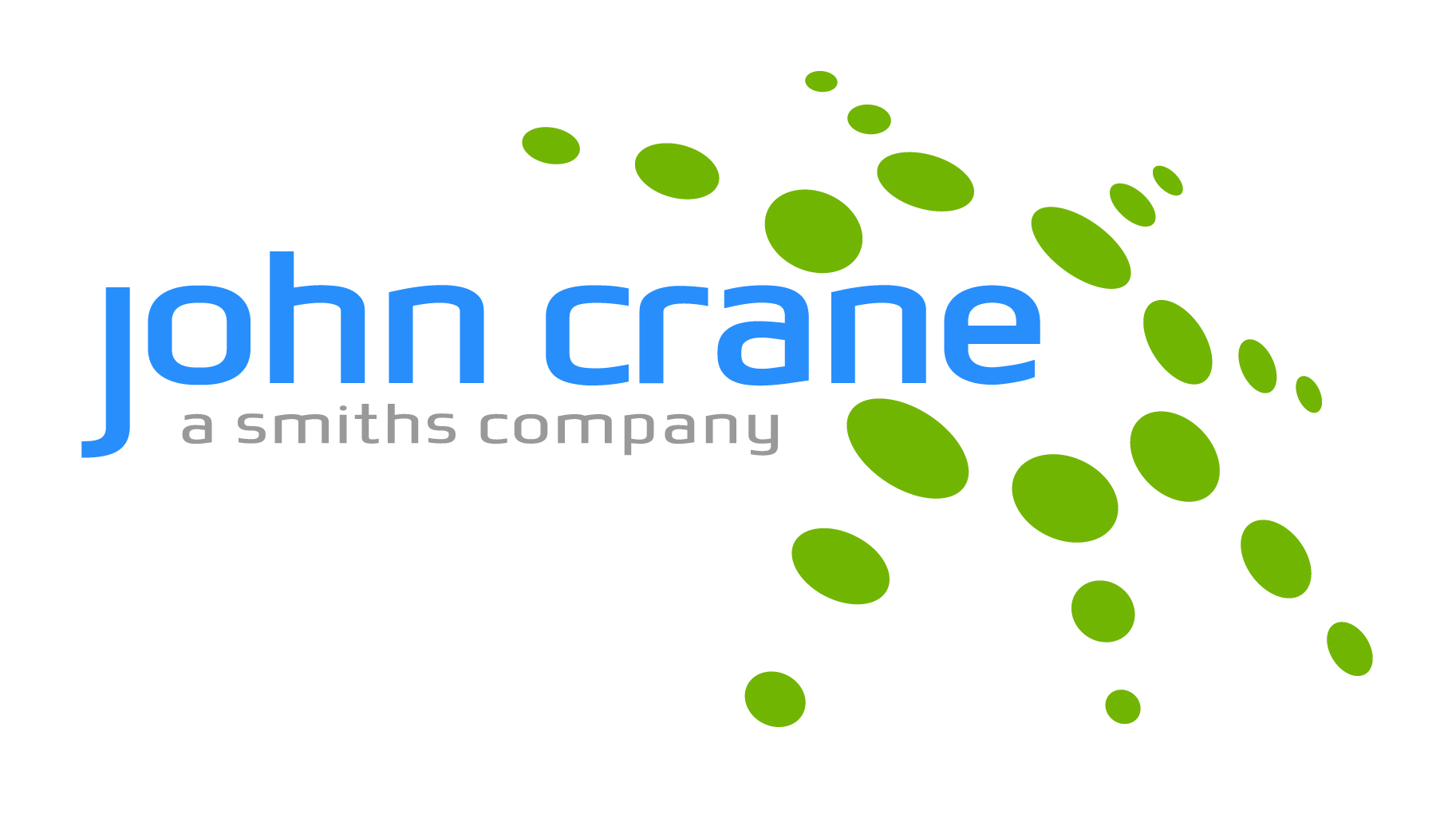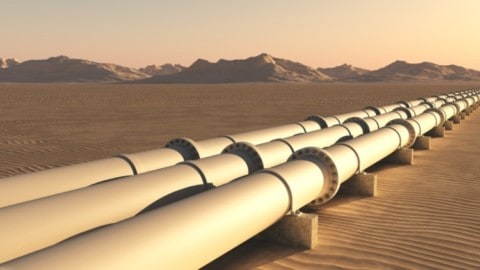By Heinz P. Bloch, PE, Process Machinery Consulting
Mechanical seals have largely replaced braided packing in the so-called stuffing boxes of modern process pumps. Both are components that keep the pumped fluid (or “pumpage”) in the pump casing. Suitable seals must be installed at the location where the shaft enters or leaves the pump casing; the purpose of these seals is to prevent leakage.
There are many hundreds of styles, sizes and configurations of mechanical seals. All mechanical seals make use of the underlying principles of stationary and rotating face combinations.
However, there are hundreds of mechanical seal options, and the elementary version shown in Figure 1 represents a mere fraction of a percent of the available cross-sections. Some of these seals are simple and inexpensive; others are complex and require special attention. Better seals make much more economic sense.

Figure 1: Operating principle and essential nomenclature of mechanical seals.
Investigating “optimum” seals
It is not possible to use, develop or find a “quasi “optimum” seal; one with geometry and materials that are best suited for every conceivable service and condition. Process pump seals are, therefore, engineered products and not commodity parts.
Of course, a specific seal configuration or material combination may serve more than one, but never all, conceivable applications. Statistics show that for every 1,000 interventions relating to pumps there will be a pump fire. Seal failures are responsible for roughly half of pump fires. Optimised sealing is, therefore, the most important priority of reliability professionals in the Hydrocarbon Processing Industry (HPI).
At best-in-class plants, mechanical seals are purchased in accordance with rigorous specifications submitted (or signed-off after thorough review) by SMEs, also known as subject matter experts. Likewise, flush plan selection for process pumps is entrusted to these professionals.
Procurement personnel handle matters of cost and schedule. Deviations from specifications are referred to the SMEs who have the final say. With responsibilities that affect life and limb, their input cannot be disregarded.
Nevertheless, there are other industry trends, and these are the subject of this article. But unlike conventional mechanical seals that often apply spring pressure, magnetic or hydraulic closing force to the face of the rotary unit (see Figure 1), mechanical seals are designed with a single coil spring, several small coil springs, or pleated bellows applying a closing force to the stationary seal part. They are then called stationary mechanical seals.
Application of spring-loaded closing force to the stationary seal face is advantageous when there is known shaft deflection and in shaft systems that operate at high peripheral velocity.
Also, designs that place the springs away from the process fluid are generally preferred over designs that allow process fluid to contact the springs. All seal assemblies need venting provisions, be it a port “A” or a simple vent passage “B” (Figure 1). The trend is clearly towards stationary seals with multiple springs that are not contacted by the process fluid.
Braided packing in use less frequently
Since about 1950, mechanical seals have almost totally replaced the more maintenance-intensive compression packing previously used in process pumps (Figure 2).
For compression packing to work properly, a few drops of liquid must be introduced between the rotating shaft and packing to carry away heat and to prevent rapid degradation of the packing material. Some of the liquid must escape into the atmosphere, and trained labour is needed for packing gland adjustment and replacement.

Figure 2: Compression packing is now used only in aqueous ser- vices (Source: AESSEAL plc. Rotherham, UK, and Rockford, TN).
Working with competent seal manufacturers
More and more reliability-focused users view mechanical seals as an engineered component. Best-in-class users have long ago started trends by seeking expert advice and cultivating relationships based on mutual trust and benefit.
Long-term customer service and consistent application of thorough engineering skills benefit both parties. They are of much greater importance than short-term returns obtained from initially paying a low price. A single failure incident often causes repair-speed and price-related gains to vanish with a single failure incident.
Seal flush piping arrangements are very often needed to create the most appropriate seal environment. The ones in use today generally belong to two main groups:
- “Flush” – clean, cool liquid is injected into the seal chamber (Figure 3) to improve the operating environment. A second, smaller port is provided and normally oriented downward. It often serves as a leakage observation or vent opening.
- “Barrier or Buffer” fluid used with dual seals – a secondary fluid is fed to the space between two sets of mechanical seal face pairs to prevent ambient air from contacting the pumped fluid, to improve seal cooling, or to enhance safety.

Figure 3: Recirculating (injecting) a product side stream per API Plan 11 (Source: API 682; also, AESSEAL plc. Rotherham, UK, and Rockford, TN).
Recirculation of a product side stream (Figure 3) is common. The side stream should have a pressure of approximately 25psi (173kPa) higher than the pressure directly behind the pump impeller.

Figure 4: API Plan 53A: Pressurised barrier fluid circulation in outboard seal of a dual “cartridge” seal configuration. A pump- ing ring maintains circulation while running; thermosiphon action is in effect at standstill (Source: API 632; also AESSEAL plc. Rotherham, UK, and Rockford, TN).
Due to increased availability of well-engineered cartridge seals (Figure 4) there are observable trends towards more frequent use of dual seals with external flush application.
However, it is worth mentioning that not all mechanical seals require special external flush arrangements. Still, for a long and trouble-free life, the mating faces shown in Figure 1 must somehow be separated by a micro-gap and cooled. The very small opening between faces must be taken up by either liquid or gas. Different flush plans (with flush schematics that can be downloaded from the websites of major mechanical manufacturers) accomplish that.
Each flush plan must accommodate the different fluid parameters, conditions and properties it serves. All flush plans are described in both vendor literature and industry specifications such as API 682 and ISO 21049. The API (American Petroleum Institute) flush plans shown in Figures 4 through 10 are linked to the captioned plan numbers but are merely representative of the many different piping or flush plans available.
In pre-existing pumps, certain upgrades or conversion to another (more modern, safer, efficient) flush plan configuration are often advantageous. Accordingly, the trend among best-in-class (BiC) reliability-focused companies is to consider the newer seal and upgraded flush plan configurations.
Leading BiC performers actively seek the advice of more than one mechanical seal manufacturer. BiCs place emphasis on reviewing the past operational experience of whatever mechanical seal style, materials or flush plans are recommended by at least two and preferably three trustworthy manufacturers.
It is worth repeating that BiC users will not be captive to only one manufacturer, nor will they purchase seals that do not comply with rigorous specifications. Because the mechanical seal testing protocols of different seal manufacturers are known to vary, seal testing requirements are well defined in the procurement specifications of reliability-focused users.
It is known that seal manufacturers have occasionally used the purchaser’s plant as their testing facility without the owner-purchaser being made aware of such being the case. This reinforces one more observed trend: that of astute purchasers engaging in thorough up-front Q&A with potential vendors.

Figure 5: Product recirculation from seal chamber to heat ex- changer and back to seal chamber, per API Plan 23 (Source: API 682; also AESSEAL plc., Rotherham, UK, and Rockford, TN).
A heat exchanger (Figure 5) will add to the cost of an installation but may be required in some services. Modern mechanical seals often include an internal pumping device – an important option that can influence seal temperature, hence, margin to vaporisation and failure risk. Including its innovative manufacturer in a facility’s list of technology providers will prove valuable.

Figure 6: Injection of cool or clean liquid from external source into the seal chamber, per API Plan 32 (Source: API 682; also AESSEAL plc. Rotherham, UK, and Rockford, TN).
Some applications favour the flush plan (API Plan 32) shown in Figure 6 although, again, its ultimate suitability for a given application or service must be reassessed. The liquid injected into the seal cavity will migrate through the throat bushing and into the pumpage.
This dilutes the process fluid and the injected fluid will, in paper producing plants, have to be removed later by evaporation. Because evaporative processes require considerable heat, the overall energy efficiency of the plant is inadvertently reduced simply because of a particular seal plan selection.
Contrary to common belief, advanced pumping rings are now often used in single seals (Figure 7). Dual seals utilise a barrier or buffer fluid to create a desirable seal environment (Figure 8). Here, too, a pumping ring maintains circulation while running. The pressure is maintained, and fluctuations are compensated by a piston-type accumulator, upper right.

Figure 7: Plan 23 cross section. Injection of single seal cavity with bi-directional (tapered) pumping device. Flush liquid is pumpage that passed through the throat bushing on the left. It re-enters this cartridge seal after being cooled (Source: AESSEAL plc. Rotherham, UK, and Rockford, TN).
The cost of the seal auxiliaries is clearly a factor and individual applications merit their own reviews. Safeguards are needed, for instance, in seal systems connected to an external nitrogen source.
These safeguards prevent the inadvertent backflow of barrier fluid into the external source of nitrogen. Likewise, the possibility of nitrogen dissolving in the barrier fluid must be considered. In other words, seal selection requires study and experience.


Figure 8: A bi-directional tapered pumping ring assembled (left) and shown separate (right) (Source: AESSEAL plc. Rotherham, UK, and Rockford, TN).
Mechanical seals as part of water management
Both Figures 8 and 9, the latter depicting pressurised and cooled barrier fluid circulation in a dual seal, are variations on the author’s “go with advanced, but proven technology” theme. The two figures again highlight why it is so important (and trendy) to have good cooperation between seal manufacturer and seal user-operator.

Figure 9: API Plan 53C: Pressurised and cooled barrier fluid circulation in outboard seal of a dual seal configuration (Source: API 682; also AESSEAL plc. Rotherham, UK, and Rockford, TN).

Figure 10: An energy-inefficient API Plan 62 in use at an older sewage treatment facility (Source: AESSEAL plc. Rotherham, UK, and Rockford, TN).
Figure 10 incorporates API Plan 62; however, examination of API Plan 62 explains why there are discernible moves towards water management in the pulp and paper, food processing, and beverage industries. Environmentally conscious breweries on all continents are involved in conservation initiatives.
Indeed, many of the seal and flush plans in these and other industries are following this healthy trend. Many of their seals and systems have been (or are in the process of being) converted to the highly effective water management approach shown in Figures 11 and 12.

Figure 11: Water management tank portion of the circulating system in Figure 12 (Source: AESSEAL plc. Rotherham, UK, and Rockford, TN).

Figure 12: Four water management systems connect to the seal glands of four separate pumps in this sample illustration. There is no drain and no water is wasted (Source: AESSEAL plc. Rotherham, UK, and Rockford, TN).
All flush plans have advantages and disadvantages
The many properties of fluids contacting the seal faces govern seal selection, but other considerations should be weighed as well. Long-term reliability and savings in utilities should be given high priority. Conversely, low initial seal cost is rarely (if ever) a good indicator of the true value of mechanical seals and seal support systems.
Historically, API Plan 23 has not received wide acceptance due to the obvious complications of applying old-style seal circulating devices or pumping rings. Utilisation of modern computer-controlled manufacturing methods has helped implement superior sealing technology.
Compact API Plan 23 cartridge seals are easily applied to both new and old pumps. Many of these seals are marketed with wide-clearance bi-directional tapered pumping devices that are far less likely to make contact with seal-internal stationary parts than older, close-clearance pumping ring configurations.
Always obtaining full picture is recommended
The reviewer must first recognise that sealing technology has advanced and that trends with reliability focus and attention to conservation of resources are evident and can be observed in many ways. Seals are part of a pumping system and all systems must be properly reviewed. We chose here to summarise the seal topic by using a few schematic representations and close with an emphasis on win-win propositions dealing with water management.
Sealing systems for optimised water management
Self-contained water management systems (Figures 11 and 12) are among upgrades and conversions that are easily cost-justified in applications that must conserve water. Self-checking hydraulic sensing valves are incorporated in these systems. BiC users have strongly supported the trend towards better managing water, a precious resource. We wanted to share their value-adding findings.
BiC trends summarised
- Stationary seals with multiple springs are favoured in process pump applications
- Phasing out any remaining packed stuffing boxes and upgrading to well-designed mechanical sealing alternatives is now widely accepted as a value-adding proposition
- More existing pumps are receiving seal and flush plan retrofits (upgrades) than in previous decades
- Plan 23 is generally preferred for hot water services, particularly boiler feed water. This plan is also desirable in many hydrocarbon services where it is necessary to cool the fluid to establish the required margin between fluid vapour pressure and seal chamber pressure
- In just a few special cases Plan 21 is preferred over Plan 23. Work with a competent seal manufacturer to identify these exceptions to the rule
- Plan 53A (self-contained water management systems) are often vastly superior to inefficient Plan 32 configurations
Competent mechanical seal manufacturers are a valuable source of reliability improvement for reliability-focused seal users and making good use of their expertise and engineering know-how is extremely important.
Cultivating a consulting relationship with three of the best manufactures and/or communicating with true innovators among them is the healthiest trend of all. Even the environment wins when users pay close attention to the environmentally conscious.
About the author
Heinz P. Bloch resides in Montgomery, Texas. His professional career commenced in 1962 and included long-term assignments as Exxon Chemical’s Regional Machinery Specialist for the United States. He has authored or co-written over 750 publications, among them 21 comprehensive books on practical machinery management, failure analysis, failure avoidance, compressors, steam turbines, pumps, oil mist lubrication and optimised lubrication for industry. Mr Bloch holds B.S. and M.S. degrees (cum laude) in Mechanical Engineering from the Newark College of Engineering and is a member of the college’s “NCE 100’s Anniversary Top 10.” He is an ASME Life Fellow and was awarded life-time registration as a Professional Engineer in New Jersey.

















